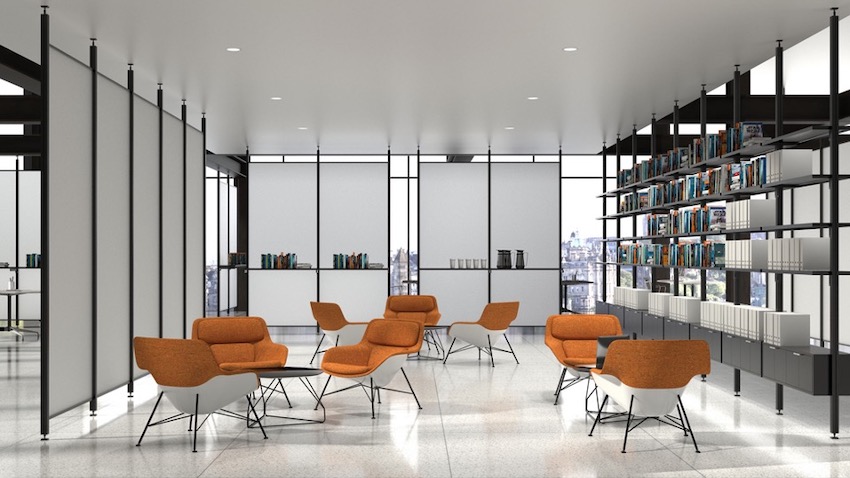Adaptability and Space Division with Modular Shelving
The components and design options for flexible shelving and storage systems
Sponsored by B+N Industries
With the fluid nature of almost all industries today, partly due to societal disruptions caused by the pandemic, it’s more important than ever for businesses to be able to pivot their models and easily accommodate future changes. Flexible design is imperative for adaptable commercial interiors, as is being able to divide space for different uses down the line. This course will discuss how modular shelving and storage systems can help meet these important objectives. We will explore the components and design options for flexible shelving and storage systems and how they can help future-proof offices, retail stores, and hospitality facilities.

Photo courtesy of B+N Industries
The heart of this office is a casual, collaborative area surrounded by light and airy frosted acrylic dividers. A long run of floor-to-ceiling shelves and cabinets defines one side while providing much-needed storage and access to research materials
B+N Industries is a leading designer and producer of award-winning proprietary products focusing on enhancing the interior and exterior aesthetics of each retail, hospitality, and workplace location. At the heart of our company is a design-centric approach, which we apply to both product development and internal operations. Clients may initially discover us through our catalog products, but soon realize the full extent of our custom capabilities. We have a strong, developed industrial design team that serves as an extension of our clients' design teams. Our robust operations and logistics team can manage rollouts on a global scale. We design and manufacture innovative and intelligently engineered solutions that create purposeful and beautiful places.
Originally published in Architectural Record
Originally published in April 2024
LEARNING OBJECTIVES
- Examine the importance of flexible design and space division in commercial interiors.
- Explore the various modular shelving and storage components and understand how the system works.
- Identify the wide variety of options available for modular shelving systems, including lighting, accessories, and finishes.
- Discover how modular shelving and storage systems can help designers create adaptable interiors and divide spaces.











